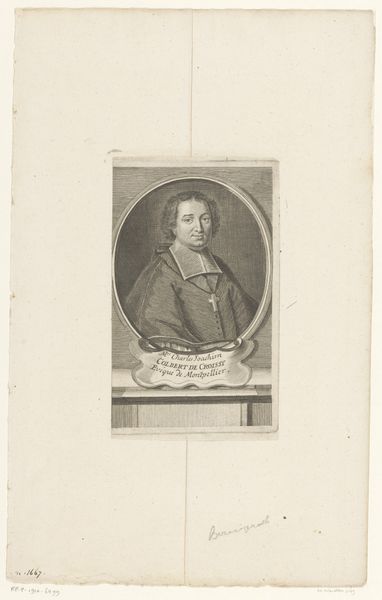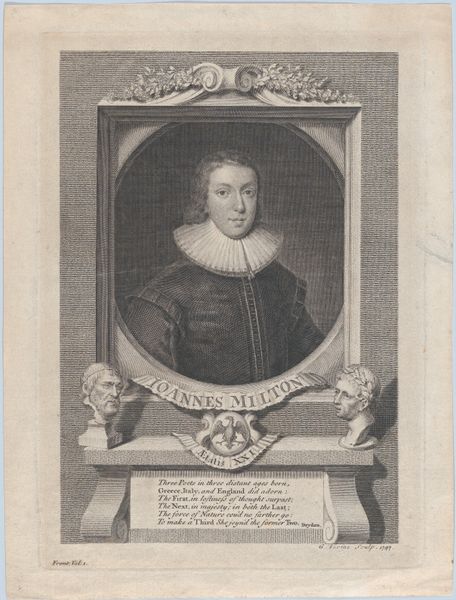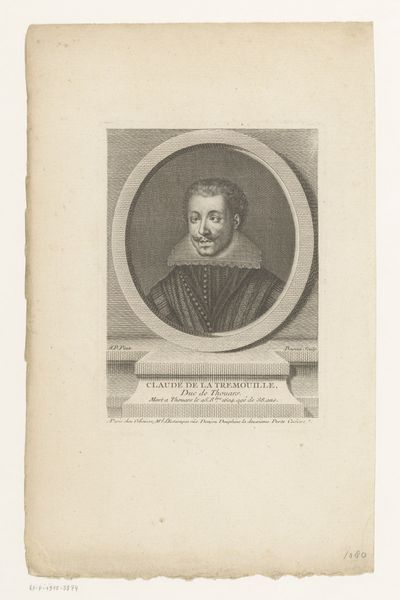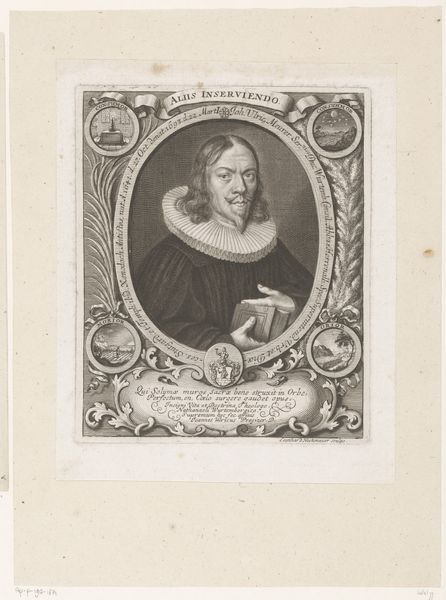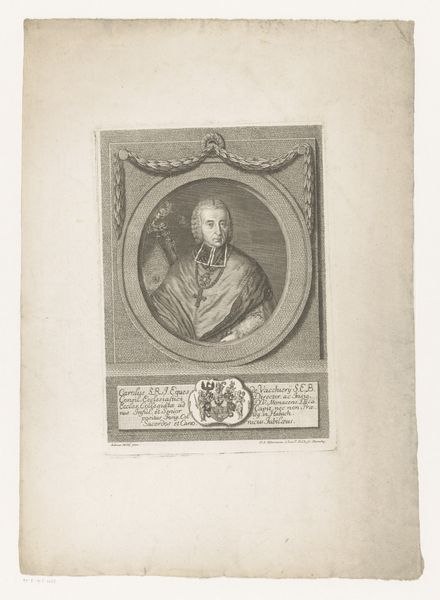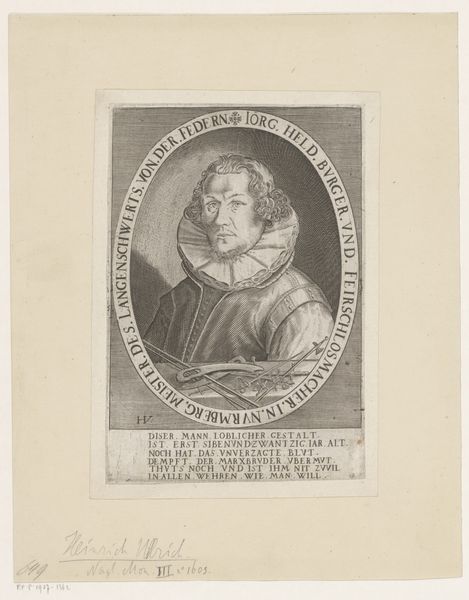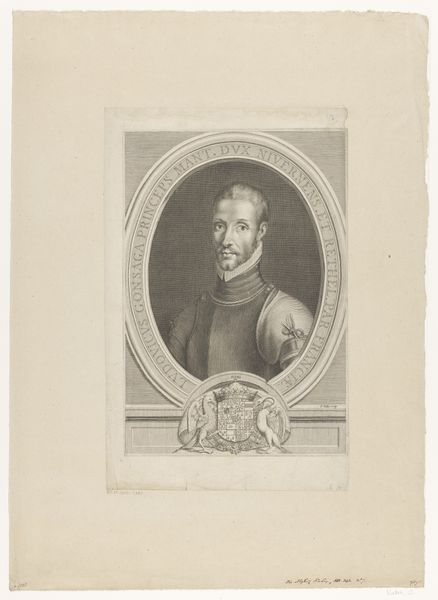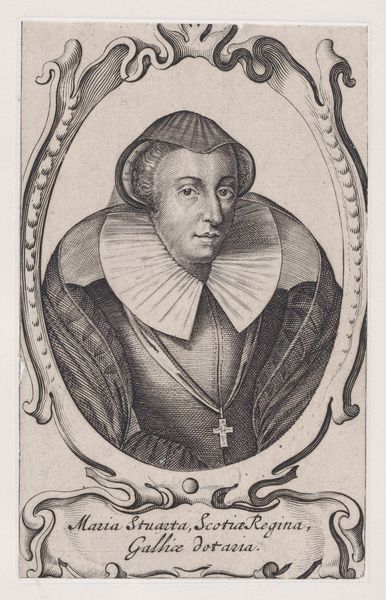
Dimensions: Plate: 5 7/8 × 4 in. (15 × 10.1 cm) Sheet: 9 13/16 × 7 1/2 in. (25 × 19 cm)
Copyright: Public Domain
Editor: This engraving, "Mary, Queen of Scots," by Thomas de Leu, likely dates from the late 18th century. The detail is astonishing; the ruff around her neck seems to leap off the page! What historical echoes do you perceive when you look at this image? Curator: The visual language surrounding Mary, Queen of Scots, is particularly potent. It became a key visual motif, especially following her execution. Engravings like these acted as mnemonic devices, keeping her story alive through the circulation of her image. Do you see how her gaze avoids direct engagement? Editor: Yes, her eyes seem averted, almost mournful. Is that a typical representation? Curator: Not always, but it contributes to a specific narrative. Think about the ruffled collar - almost halo-like - combined with her downward glance. It encourages empathy. The artist uses her portrait to subtly comment on power, victimhood, and memory. How do you think viewers at the time responded to such a depiction? Editor: I imagine it evoked strong feelings. Knowing her tragic end, seeing her portrayed this way…it definitely plays on pathos. Curator: Precisely. The visual shorthand becomes shorthand for a complex, emotionally charged history. The engraving isn't just a picture; it’s an icon infused with political and religious significance, re-enacting the story through readily accessible, reproducible form. Editor: It’s amazing how much a single image can hold when you consider the historical context. Thanks for opening my eyes to this! Curator: Indeed. Every line, every shadow, whispers volumes about the cultural memory it aimed to preserve.
Comments
No comments
Be the first to comment and join the conversation on the ultimate creative platform.

